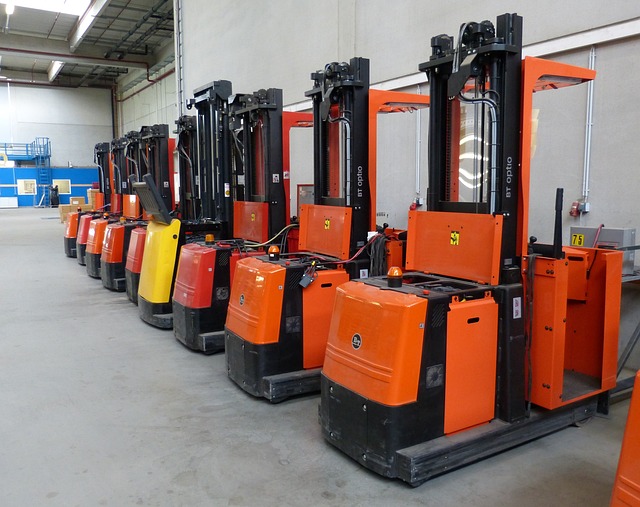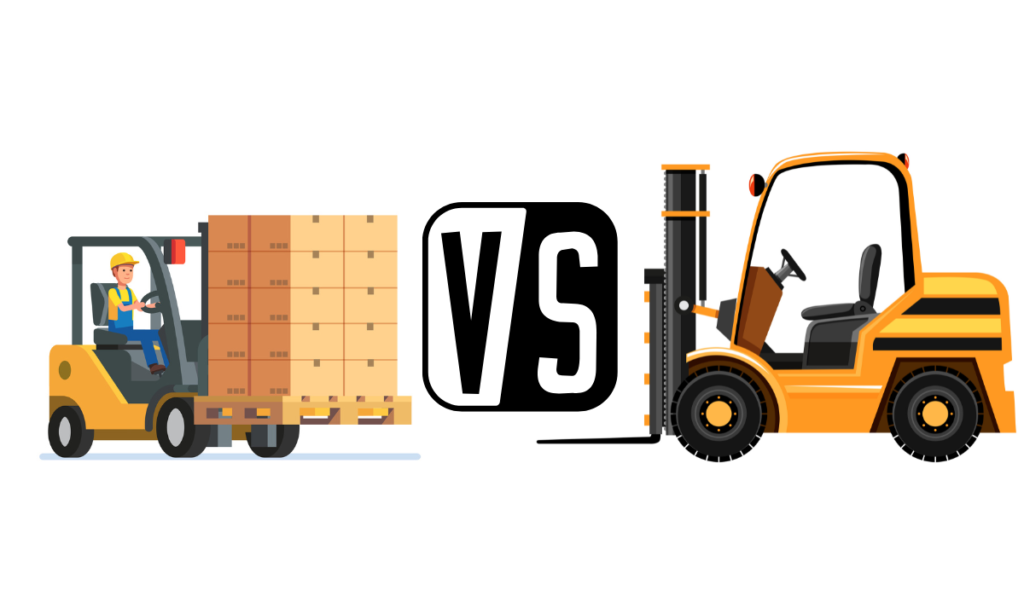Class 2 Forklifts: Maneuverable Marvels for Narrow Aisles
Class 2 forklifts, also known as electric narrow aisle forklifts, are specifically designed for indoor material handling tasks in environments where space is at a premium. The forks on Class 2 forklifts are intricately connected to a carriage system that facilitates vertical movement along the mast. This design enables efficient stacking and retrieving of pallets in tight spaces, making them ideal for navigating narrow aisles commonly found in warehouses and distribution centers.
Learn More : Forklift Classes and Types
The key feature of Class 2 forklifts is their ability to operate in confined spaces with precision. The forks’ vertical movement, controlled by the mast, allows for effective utilization of vertical storage space. This makes Class 2 forklifts indispensable for tasks such as organizing inventory on high shelves, maximizing storage capacity, and enhancing overall warehouse efficiency.
Class 3 Forklifts: Ground-Level Prowess with Fixed Forks
In contrast, Class 3 forklifts, commonly referred to as electric pallet jacks, have a distinct fork configuration tailored for horizontal movement on the ground. Unlike Class 2 forklifts, the forks on Class 3 forklifts are fixed to the front of the truck. This design is optimized for lifting and transporting pallets horizontally over short distances.
The fixed forks on Class 3 forklifts are instrumental in tasks such as loading and unloading trucks and moving palletized loads within a facility. With a focus on ground-level operations, Class 3 forklifts excel in scenarios where the primary requirement is efficient movement of pallets across a flat surface.
Learn More : How much electricity does a forklift use?
Difference Between a Class 2 and a Class 3 Forklift forks
In summary, the key difference between Class 2 and Class 3 forklifts lies in their fork design and functionality. Class 2 forklifts are engineered for vertical movement in narrow aisles, offering a solution for efficient vertical material handling in confined spaces. Meanwhile, Class 3 forklifts, with their fixed forks, are specialized for horizontal movement on the ground, making them highly effective for tasks involving the transportation of pallets over short distances. Each class serves a specific purpose, catering to the diverse needs of material handling in different operational environments.



